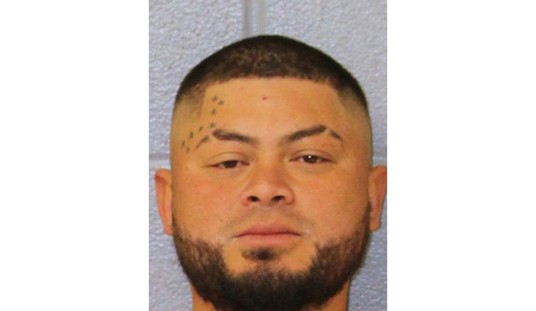
“For many artists, nothing inspires more existential terror than actually making art. The fear that we’re not good enough or that we don’t know enough results in untold numbers of creative crises and potential masterpieces that never get realized,” electronic music composer/producer Dennis DeSantis writes at the beginning of his new book, Making Music: 74 Creative Strategies for Electronic Music Producers.
In the old days of pop music, bands like the Beatles, the Stones and Led Zeppelin worked hard to avoid making their minimalist bass, drum and guitar instrumentation sound as varied as possible. These days, anyone who owns decent home recording software such as a digital audio workstation (DAW) and software synthesizers like Propellerhead’s Reason effectively has access to the timbres of all of the world’s instruments. And access to some of the world’s best players: it’s possible to purchase drum loops professionally recorded by Mick Fleetwood, Nick Mason of Pink Floyd, and Joe Vitale, who played drums behind so many of Joe Walsh’s hits, for example. And then via applications such Celemony Melodyne, completely fine-tune and even entirely reshape our sounds into tight, perfectly-tuned notes and riffs.
That’s some rather amazing power, which the Beatles and George Martin would have killed for when they were recording Sgt. Pepper. So why is it, after we boot up our computers and load our DAW software, staring into a blank recording template before starting a new project often feels even more terrifying than a writer staring at a blank piece of paper or Microsoft Word file? What can be done to reduce this fear?
In Making Music, DeSantis, who holds music composition degrees from multiple universities, looks to break the home recordist’s version of writer’s block. As DeSantis writes:
Think about something you consider a hobby, something (besides music) that you do with your free time. Maybe you run marathons, or brew beer, or take wildlife photographs. Whatever it is, have you ever even considered doing it professionally? Probably not. And most likely this isn’t because you’re not good enough (and whether you are or not is probably irrelevant to your decision), but rather because the very fact that it’s a hobby means that it’s something you do that isn’t work. Instead, it’s a chance to spend time on something fun and fulfilling that doesn’t saddle you with any outside pressure to succeed, earn a living, etc.
Electronic musicians, more so than musicians working in other genres, seem to have a more difficult time simply engaging with music as a hobby. Perhaps this is because tools like DAWs are fundamentally designed around a recording mentality. Think about people you’ve met who own an acoustic guitar. Just pulling it out and playing it for a few minutes while sitting on the couch may be the extent of their musical aspirations. And they don’t see this as failure. They’re not lamenting their inability to get gigs or write more music or get record deals. They’re having exactly the relationship with music that they want. In fact, they’re usually not even recording what they play; once it’s in the air, it’s gone.
By definition, being a professional means having to spend at least some amount of time thinking about the marketplace. Is there an audience for the music you’re making? If not, you’re guaranteed to fail. Amateurs, on the other hand, never have to think about this question at all. This frees them to make music entirely for themselves, on their own terms.
Whatever your interest in home recording, whether it’s as a songwriter, an instrumental-oriented electronic dance music composer, or simply as someone looking to record your own instrument and maybe overdub a solo or two, we all know that feeling of writer’s block or producer’s block.
Or “artist’s block” as Julia Cameron, the former wife of Martin Scorsese dubbed it in her best-selling 1992 book The Artist’s Way. From a big picture point of view, Cameron’s book can provide some inspiration to break through artist’s block in general. She stresses that if the artist concentrates on quantity, then quality will come in time as well, as his craft improves through work, process and repetition — provided that cold feet don’t arrive along the way. As one of the many lines I highlighted in my Kindle edition of her book notes, “We usually commit creative hara-kiri either on the eve of or in the wake of a first creative victory. The glare of success (a poem, an acting job, a song, a short story, a film, or any success) can send the recovering artist scurrying back into the cave of self-defeat. We’re more comfortable being a victim of artist’s block than risking having to consistently be productive and healthy.”
Not Tied to Any One Software Platform
Until now though, there have been few books specifically aimed at the home recording junky to help break through his own particular brand of artist’s block. That’s where DeSantis’ new book seeks to help. While it’s published by Ableton AG, the Berlin-based makers of the popular Ableton Live DAW, DeSantis has very wisely written a book that’s not platform specific. So if, like me, you work mostly with Cakewalk’s Sonar DAW, or the popular Apple Logic Pro, or just about any other recording program, you won’t feel like you’re reading an Ableton instruction manual or infomercial in disguise.
Instead, DeSantis has written 74 tips, each two or three pages long and many illustrated with MIDI templates and/or music staves, to help break the accumulated habits that lead to what I call “recordist’s block.” Like Cameron’s one-size-fits-all-book, DeSantis has numerous inspirational aphorisms from famous artists along the way; perhaps my favorite is his quote attributed to Ernest Hemingway: “Write drunk; edit sober.” Not necessarily literally so, unless you’re Hemingway, Christopher Hitchens, or our friendly neighborhood VodkaPundit, but the idea is a straightforward one, whether or not liquid inspiration is also ingested: switch on the DAW and go play — in both the musical and the child’s sense of the word. Go crazy; try weird sounds, techniques or styles you’d never otherwise explore. Then come back later and take a listen. (I like to wait the next day to listen to my recorded parts in general, sort of like the way a director analyzes the dailies, the rough material shot the day before, with his film crew, to select the best take.)
And then, when editing, it’s useful, as DeSantis writes, to focus on ruthlessly editing whatever inspiration flowed out the night before. He proposes a similar strategy when composing:
Even if you’re a seasoned veteran with years of experience and carefully thought-out reasons for choosing your studio tools, try making a track using a completely different set of tools. Try changing everything, from your DAW to your plug-ins to your hardware instruments… For example, if you’re a software-only producer, try making a track using hardware synthesizers.
This is similar to the person who primarily plays guitar, but is able to write songs on the keyboard precisely because he’s more limited on the keys. Or vice-versa: there are lots of keyboard-based songwriters who also play guitar in order to force themselves out of their comfort zones. And that’s the trick: Finding new sounds, riffs or chord progressions by escaping the clichés you’ve built up on your primary instrument or DAW.
At the start of this review, I used the example of a blank DAW template as being similar to a blank manuscript page or Word file; but there is one key difference between a DAW template and paper: a DAW template can (almost always) be customized to your specific techniques. This is a great way to break what DeSantis calls “The Tyranny of the Default:”
Because DAWs have to cater to a wide range of users, they are often designed to work out of the box with a collection of default options and a basic screen layout that will be offensive to no one but probably also not optimal for anyone. This inevitably leads to a phenomenon that software developers call “the tyranny of the default”: Since most users will never change their default software options, the seemingly small decisions made by developers may have a profound effect on the way users will experience the software every day.
In other words, if you never use the DAW’s built-in metronome and rely on a particular drum machine applet or loop package, delete it from the template. If you mostly work in a particular tempo range, have the DAW open up with an appropriate tempo already pre-set. If you’re always starting with a particular number of tracks, or in MIDI with a particular software synthesizer, or with a particular audio patch on your interface, customize your DAW’s template to reflect your techniques. All of which draws you that much faster into the flow of working (read: playing) , rather than the agony of software housekeeping.
DeSantis’ book proceeds in complexity from there; his only assumption is that you have a basic working knowledge of your favorite DAW; in the introduction of his book, he even adds, “A basic understanding of the fundamentals of music — chords, scales, and concepts of rhythm– is useful but not a prerequisite” for putting his book to work. But by the time you’ve finished his book, with its later chapters on melody and harmony, you may well find yourself with a better understanding of the building blocks of music — in addition to fearing your DAW a bit less when you fire it up.
Currently available for $9.99 on the Kindle, and at $30 for a handsome 336-page hardbound “dead tree” edition at Ableton, this is an exceedingly useful book to break through a stubborn case of “recordist’s block,” and highly recommended for those of us who enjoy tinkering in our (virtual or real) project studios and look to get more out of them. Happy recording!










Join the conversation as a VIP Member